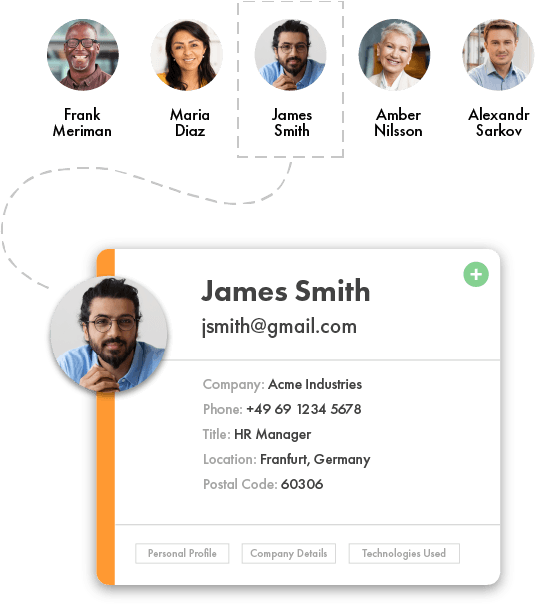Hiring and talent acquisition take the action of bringing in new minds and staffing into the organization. While organizations have to compete with each other over top talent, recruitment strategies must be crafted where both employers and candidates win by committing to each other’s goals.
The Importance of Talent Acquisition
Talent acquisition drives business growth, performance and success. With effective talent acquisition strategies, an organization stays ahead of the competition through its workforce’s innovation and skills. Here are some of the advantages of having talent acquisition strategies.
Acquire Top Talent
Talent acquisition plays a crucial role in attracting and acquiring top-notch professionals with the skills, experience, and expertise required to drive business success. At least 51% of TA leaders state that they hire the best talent with minor skill gaps, while 46% state that they hire the best regardless of the cost.
Gain Competitive Advantage
By implementing effective talent acquisition strategies, businesses can gain a competitive edge by securing the best talent in the market and positioning themselves for growth and innovation.
Enhance Business Performance
Talent acquisition directly impacts organizational performance by ensuring that the right individuals are in the right roles, contributing to increased productivity, efficiency, and overall business success. For example, using benefits as a talent acquisition strategy improves company performance by 58%.
Strengthen Business Resources
Through talent acquisition, companies can build a pool of talented individuals who bring diverse skills and perspectives, enriching the company’s resources and capabilities. For example, according to Forbes, companies with culturally and ethnically diverse executive teams are 33% more likely to have above-average profits.
Foster a Positive Company Culture
Talent acquisition allows organizations to select candidates who align with the company’s values, fostering a positive and cohesive company culture that drives employee engagement, satisfaction, and retention.
Improve the Recruitment Process
Talent acquisition focuses on optimizing the recruitment process, ensuring that it is efficient, streamlined, and aligned with the organization’s goals, resulting in better candidate experiences and improved outcomes. Statistics have shown that using benefits as a talent acquisition strategy also increases recruitment effectiveness by 19% more than companies that don’t.
Nurture Talent Pipelines
Talent acquisition involves building and maintaining relationships with potential candidates, creating talent pipelines for future hiring needs, and reducing time-to-fill vacancies. While 60% of job seekers look for new jobs through job boards, 56% use professional social media like LinkedIn.
Leverage Talent for Innovation
By strategically acquiring talent, businesses can tap into new ideas, perspectives, and skills, fostering an environment of innovation and continuous improvement. According to Forbes, workplace diversity has more fresh ideas and creativity, leading to better decision-making and a more professionally stimulating environment.
Adapt to Changing Business Needs
Talent acquisition allows organizations to proactively address evolving business needs by identifying and acquiring talent that aligns with emerging trends, technologies, and market demands.
Maximize Return on Investment
Effective talent acquisition ensures that resources invested in recruitment and onboarding are optimized, minimizing turnover costs and maximizing the return on investment in human capital.

Understanding the Recruitment Process
The recruitment process consists of several vital elements to hire the best candidates that align best with the organizational values and will help achieve organizational goals.
At least 44% of TA leaders evaluated their hiring process’s effectiveness in the last half of 2022. Most (33%) prioritized diversity and inclusion, followed by sourcing, recruitment marketing, hiring manager relations, and candidate experience.
Here are some critical steps in the recruitment process.
- Identify Staffing Needs: The recruitment process begins with identifying the organization’s staffing needs, including determining the number of positions vacant and clarifying job descriptions and required qualifications.
- Job Posting and Advertising: The next step involves creating job postings and advertising them through various channels to attract potential candidates. This stage can include online job boards, social media platforms, company websites, and professional networks.
- Candidate Sourcing: In this step, recruiters actively source candidates through resume databases, employee referrals, networking events, and direct outreach. Sourcing tools like LeadNeuron™ allow you to identify potential candidates based on their skills and experiences, not just their job titles.
- Resume Screening: The resumes received are screened to shortlist candidates with the required qualifications and experience. This stage helps in identifying the most suitable candidates for further evaluation. Automation tools like Neuron360-Profiles™ allow you to plug into 800+ million professional profiles worldwide and help you screen standardized data.
- Candidate Evaluation: Shortlisted candidates undergo assessments and reference checks. This step assesses candidates’ skills, cultural fit, and suitability.
- Interviewing: Candidates who pass the initial evaluation are invited for one-on-one, panel, or competency-based interviews. The purpose is to gather more information about their qualifications, experience, and potential fit within the organization.
- Selection and Decision-Making: Based on the interviews and assessments, the hiring team evaluates the candidates and decides on the most qualified candidate(s) for the position. This decision is based on skills, experience, cultural fit, and alignment with the organization’s values.
- Offer and Negotiation: Once the ideal candidate is selected, an offer of employment is extended, including details such as compensation, benefits, career advancement opportunities, and start date. Negotiations may take place during this stage to finalize the terms of employment.
- Onboarding and Orientation: The onboarding process begins after the candidate accepts the offer. This step involves introducing the new hire to the organization’s policies, procedures, culture, and job responsibilities, setting them up for a successful start in their new role. An effective onboarding program improves retention rate (82%) and productivity (70%).
- Employment and Follow-up: The recruitment process concludes with the new employee’s official start date. HR departments and managers provide ongoing support, guidance, and follow-up to ensure a smooth transition and integration into the organization.
Effective Strategies for Hiring Top Talent
83% of TA leaders have reported that talent acquisition has become a business-level priority. Therefore, effective talent acquisition strategies are a must. That is why 68% increased their TA budget in 2022 while 65% increased their TA headcount. By working together, here are proven strategies for attracting and selecting top candidates.
Use Hiring Technology
Hiring technology tools can increase the recruitment and hiring process efficiency. With the time saved from tedious work, 66% of TA leaders plan to use it to build better relations, and 61% would use it to recruit diverse candidates from non-conventional sources. In comparison, 40% will use the time to identify and contact candidates likely to leave their companies.
Utilize RPO Partnerships
Recruitment Process Outsourcing improves year-over-year hiring costs by 38%. More than half of TA leaders surveyed (59%) consider their RPO partnership successful due to innovative solutions to the challenges they faced. 73% also use data derived from hiring technology or tools of their RPO to make informed decisions.
Gain a Competitive Edge with Compensation and Benefits
The top reasons employees would consider quitting are compensation, career advancement, and lack of recognition. In addition, 67% of job seekers prioritize salary when looking at job ads, and 63% look at benefits. But benefits should not just be minor perks. 94% want benefits that would positively impact the quality of their life, such as paying off student loans or having more flexible work arrangements.
As mentioned before, having reasonable compensation meaningfully affects the organization in job performance and a higher retention rate.
Increase Diversity and Inclusion
Diverse hiring means having recruitment methods to employ individuals of different cultural backgrounds, ethnicities, genders, ages, education levels, sexual orientations, and more. They bring a wide range of insights and solutions instead of similar solutions due to a uniform cultural view.
Racially diverse organizations are more likely to outperform their competitors by 35% and are more likely to capture clients by 70%. Even 76% of job seekers evaluate companies if their workforce is diverse.
Diversity recruitment strategies can include blind recruitment. By removing a candidate’s identification details, women have a 46% more chance of getting hired due to the removal of unconscious bias. Fostering diversity in the company’s professional posts also increased applications from women by 26%.
To find more diverse candidates, having an AI tool such as LeadNeuron™ allows you to reach a wider pool of talent based on their skills and experiences.
Improve the Candidate Experience and Employer Brand
How an organization treats candidates speaks of how they treat their employees. If the candidate’s experience is positive, job seekers are more likely to prioritize and commit to the process.
The first thing jobseekers would do is look at the salary and benefits – a majority of job seekers who do these are frontline workers. Of Glassdoor users, 86% go through company reviews and ratings before applying to job ads. In the marketing stage of the hiring process, you might ask employees to write reviews at various stages of their career advancement.
When responding to job ads, 38% of job seekers will commit 10 minutes to complete an online job application. Therefore, online job application forms must prioritize the required information.
During interviews, most HR professionals use structured interviews which not only streamline the hiring process; it also creates an organized experience for candidates.
Most candidates (71%) preferred being notified if they were rejected as soon as possible instead of being ghosted. Those who backed out of a job opportunity may have done for the top three reasons:
- The company or job didn’t interest them.
- They took another offer.
- The hiring process is long and complicated.
Top candidates are only available for up to ten days before being hired. An automated recruitment process can help accelerate recruiting top talent.
Lastly, hiring must be mobile-friendly. 89% of job seekers use their phones to search for a job on social media platforms, with 45% of them using it once a day.
Create a Flexible Remote Workforce
Remote work has benefited employers and employees. 83% of organizations received increased savings, flexibility, and access to a larger talent pool. Even 90% of hiring managers expect remote work to continue as it has given employees flexibility and increased productivity. Therefore, 70% of organizations plan to adopt the hybrid model that allows employees to be connected while working remotely.
Ensuring Compliance in the Hiring Process
Compliance is essential when designing your hiring process and talent acquisition strategies. If law violations are found, it can cost the organization hefty fines and legal action.
For US companies, here are laws to be mindful of:
- Equal Employment Opportunity Laws: prohibits discrimination
- Fair Credit Reporting Act: regulates data protection in the hiring process
- Immigration and Nationality Act: prevents discrimination based on national origin or citizenship
- California Consumer Privacy Act: protect personal and professional data
- Family and Medical Leave Act: helps new parents to have the right to unpaid or paid parental leave
- Occupational Safety and Health Act: work safety
- National Labor Relations Act: protects the unionizing of employees

Leveraging Data Management in Talent Acquisition
For a smoother hiring process, data management must collect, analyze and utilize recruitment data effectively. Neuron360-Profiles can help you automate the stages of your recruitment:
- Find a diverse global pool of professionals from 800+ million profiles: all data are ethically sourced and compliant with GDPR.
- Unify your data set: job titles are translated and normalized from over 164 countries into standardized skills and professions to give you results with 20% more efficiency.
- Discover emerging skills and trends: Get top talent with innovative skills as the LeadNeuron AI model automatically discovers and evaluates 32,000 skills from hundreds of public sites and data sets.
Talent acquisition has transformed with the rapid changes in the industries. To stay on top, organizations must adapt and think outside the box with diverse hiring, streamlined recruitment process, and strategies where both employees and candidates win. You can start by having access to millions of diverse talent with your personalized demonstration of Neuron360-Profiles.
